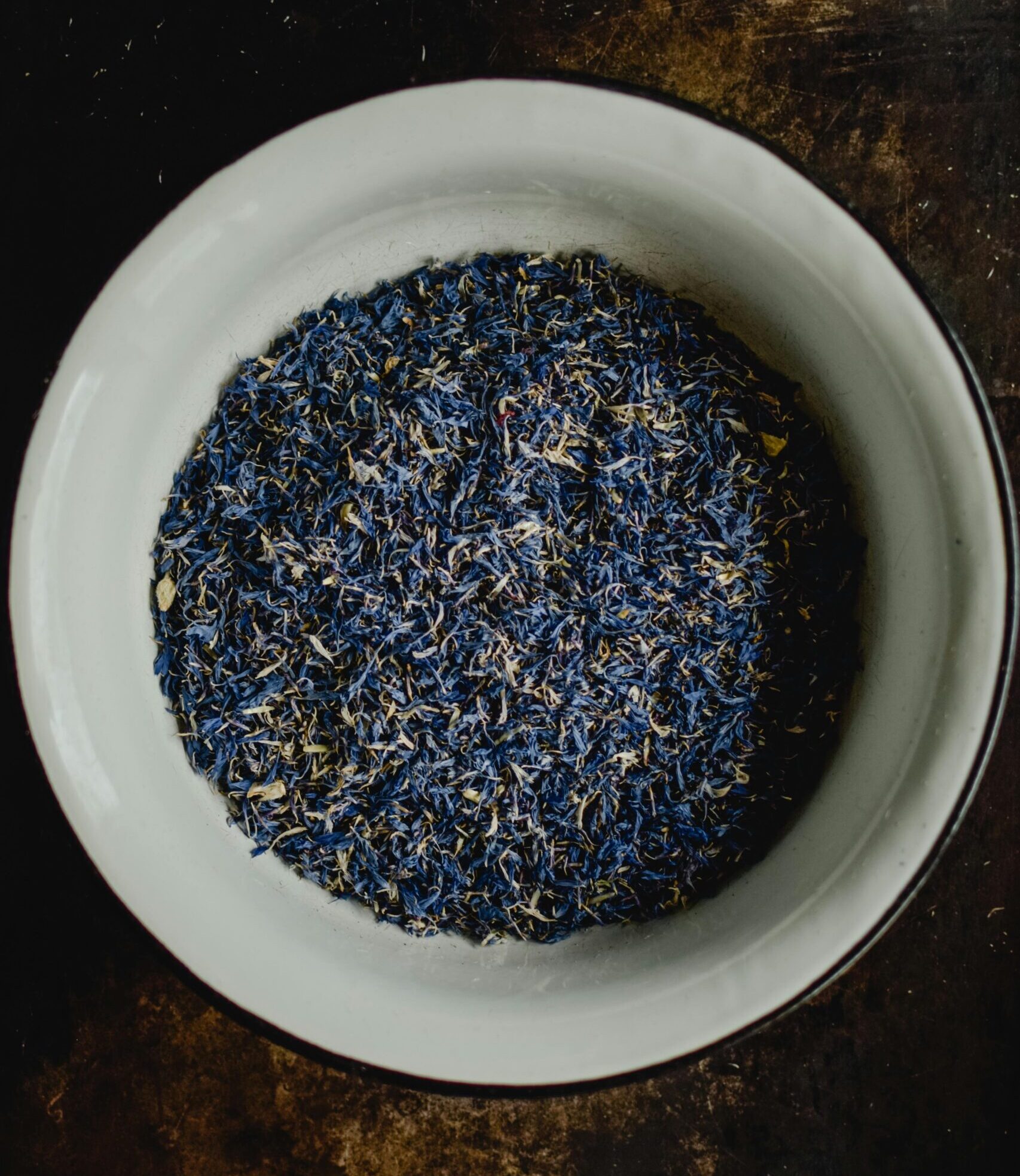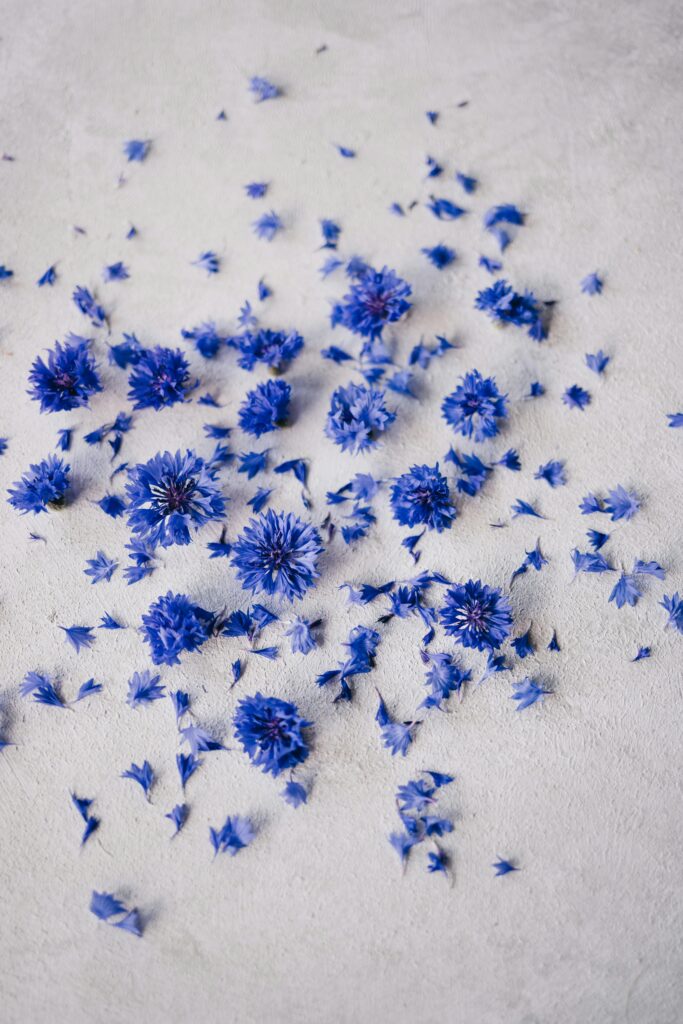Property Series - Cornflower
A blue dream of an herb!
Centaurea cyanus, bachelor’s button, hurtsickle, blue bottle
The elusive cornflower stands on tall, reedy stems where its royal blue petals can call out to pollinators. Cornflowers are considered neophytes, so though they originally found in Europe, human travel led them to be found globally. They are harder to find in the wild due to farming practices that have reduced populations as they can be invasive. While foraging may be out of the question in your area, they are easily cultivated and seeds/petals are largely commercially available.

What is cornflower?
Cornflowers are considered wildflowers making them easy to grow and commercially abundant. They are in the Centaurea family, a genus that came from Europe and Asia named after the centaur Chiron who taught medicine to the Greek heroes. It has close ties with the goddess Venus, and is known for its soothing properties. It makes a good anti-bacterial, anti-inflammatory, and stimulant for collagen, menstruation, and the gastro-intestinal area. Cornflowers make great additions to cut flower arrangements or to add a pop of color to pot-purri.
What does cornflower do?
Physical Benefits
The skincare properties of cornflower are immense, though it is mostly associated with eye care. Beyond the enticing blue hue, cornflower petals have shown to help with:
- Collagen and elastin production
- Brighten and even out skin tone
- Soothe irritated or inflamed skin
- Enhance radiance
- Moisturize
Ingesting infused/decocted petals (usually as a tea) can help with stomach pains, constipation, and increase appetite. There is limited research to show that cornflower can be helpful in treating varicose—or spider—veins symptoms when used in conjunction with traditional, western treatment. There is lore stemming from Nicholas Culpepper’s, a 17th century botanist, believed cornflower is a remedy for scorpion venom and a protectant against other venoms and poisons.
Spritual Benefits
Cornflower petals’ deep blue hue invites divinity, communication, and awakening. Connected to the third chakra, it’s said to improve psychic skills and abilities, cleanse the aura and environment, and dream work. Its relation to Venus gives it romantic qualities including love, sex, and fertility. We also use it in some our Evil Eye blends to ground the user to the divine. Cornflower is great for dream work as it can enhance vivid dreams and dream recall.

While we like to work with dried herbs to extend the life of the product, fresh cornflower parts can be used, just keep in mind the shelf life will be shorter due to the microbes in the water stored in the plants. The dried petals make excellent smoking blend additives and can easily be incorporated to tea blends. It’s soothing and calming properties work well with calendula, chamomile, and lemon balm.
